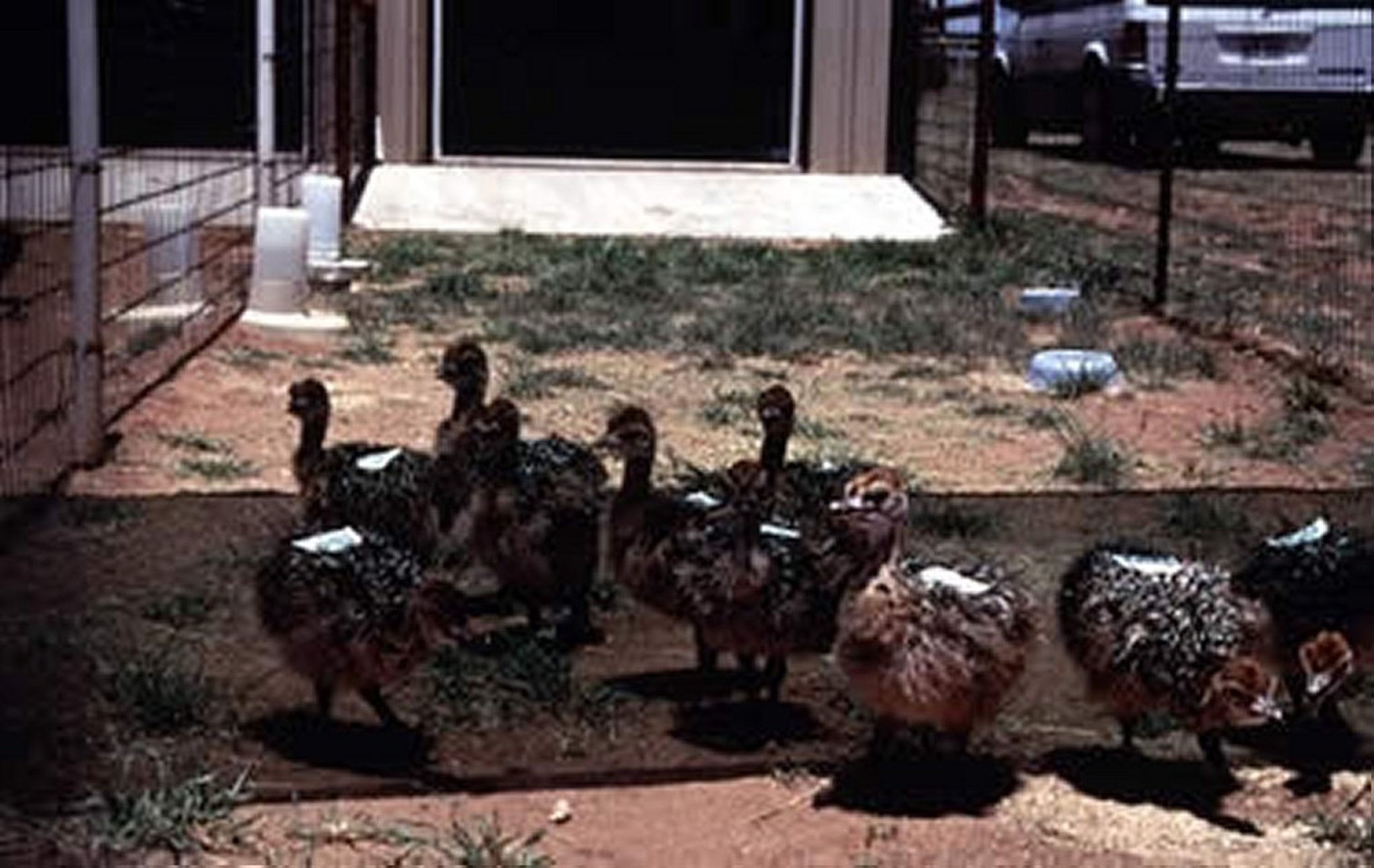Courtesy of Dr. Karen Hicks-Alldredge.
The basic principles of animal husbandry and aviary management, including an “all-in/all-out” system of management, biosecurity of the flock and facility, and a stress-free environment, are inherent to successful ratite production. Generally, the level of identifiable infectious disease among chicks is low, and most clinical signs are produced by stress factors such as poor ventilation, overcrowding, excessively high ambient temperatures, overuse of antimicrobials, improper incubation or hatching procedures, improper nutrition, and other management-related disease. When considering the sick chick, it is important to evaluate the population at risk and take appropriate steps to prevent transmission of disease. This often means elimination of clinically ill chicks by appropriate quarantine or euthanasia. If an infectious disease is involved, treating the individual chick in its environment places the other birds within the group at risk.
Ratite chicks do well on a wide range of substrates (including sand, grass, alfalfa, or native pasture) if they are introduced to the substrate at hatch and have adequate space, ventilation, and sufficient feeders and waterers. Ostrich chicks up to 3 months old grow best and have the fewest management-related diseases (eg, proventricular impaction, leg problems, and feather picking) if 100–133 square feet of pen space per bird is available. Ostrich chicks do not do well when confined to concrete floored housing. Adequate exercise is an important consideration for normal leg growth and digestive function.
Musculoskeletal abnormalities of the coxofemoral joint, stifle joint, femur, and tibiotarsus are common physical problems of ratite chicks. Spraddle leg is an abnormality of the coxofemoral joints that prevents normal adduction of the limbs. Lack of exercise and excess weight due to edema at hatch or overfeeding are the main underlying causes of spraddle leg and progressive lateral rotation of the tibiotarsus and the tarsometatarsus. Limb musculoskeletal abnormalities are progressive and have an extremely poor prognosis; management practices must be in place to prevent their occurrence, including maintenance of an appropriate growth rate and provision of acceptable substrate and opportunity to exercise. Rolled toes are diagnosed more often in young ostriches and can be treated by splinting the affected toe(s) in a normal position.
